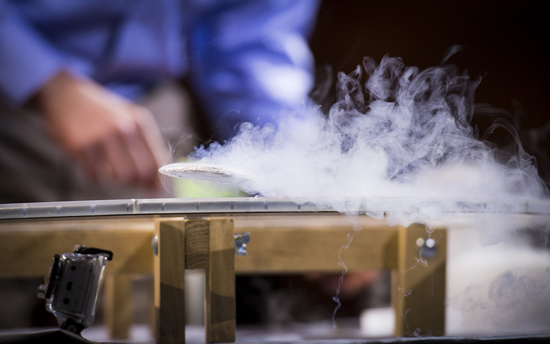
TED Talks often get 100 or more comments — a mixed bag of kudos, critiques and questions. Looking back on the year, here are a few comments that wowed us.
Do you know more about a topic than the speaker had time to share in their talk? Here’s a great example of how a knowledgeable commenter filled in some of the blanks. We know that for every TED Talk we post, many of our viewers are experts in the field. If a talk is up your professional alley, we’d love to hear you elaborate on an interesting detail.
“Great demonstration of a great technology. For those of you interested, since the speaker didn’t get in to the details of the potential for this technology:
Superconductivity is a phenomenon that has applications so far and wide that, if we were able to apply it wherever we wanted, it would change the world on a scale comparable to the advent of electricity itself. The problem is that we only know how to make superconductivity work at very cold temperatures with very specific materials. Over time, researchers have discovered materials that transition to superconductivity at higher and higher temperatures until, today, it can be achieved well above the boiling point of nitrogen. Obviously, the holy grail here is finding a material that goes “super” at room temperature. That’s a discovery that would change the world.
What makes this so suspenseful is that scientists don’t actually understand HOW superconductivity occurs at such high temperatures. In the past, scientists thought they had figured it out and so concluded that superconductivity could not occur above about 30 kelvin, much less room temperature (about 300k). The suspense was over…. until the discovery of superconductors that operated at temperatures much higher. Scientists were baffled, and still are, as superconductors continue to be discovered at temperatures higher than anyone had ever imagined was possible.
Potential applications? Too many to list. You could let your imagination go wild.
- Energy? Cheaper, much cleaner, much more efficient
- Computers? Cheaper, much faster
- Transportation? Cheaper, faster
- Magnets? Much stronger (magnets are used to produce electrical current, among other things)
- Batteries? Yep
- Data storage … and so on.”
Not an expert, but have a great resource to share? These links connected us to even more to see and do.
Commenter Eric Olofson gives more info on Daphne Bavelier’s talk “Your brain on video games”:
“Given the number of commenters critiquing the methodology of the mental rotation study without having read the research (which was conducted by a different lab, as she notes), you can read the study here:
The study she describes is Experiment 2. While there may be critiques, the lack of a control group is not one of them.”
Commenter Michael LeVine on Nina Tandon’s “Could tissue engineering mean personalized medicine?“:
“Great talk Nina! Anyone in NYC should consider checking out the DIY science discussion panel put on by SpotOn NYC on Thursday, where Nina will be on the panel!
Comments (2)